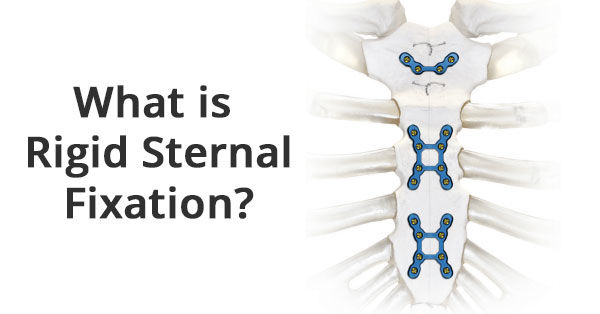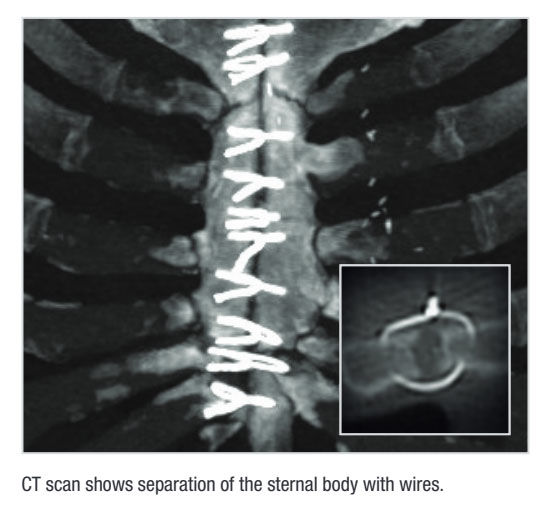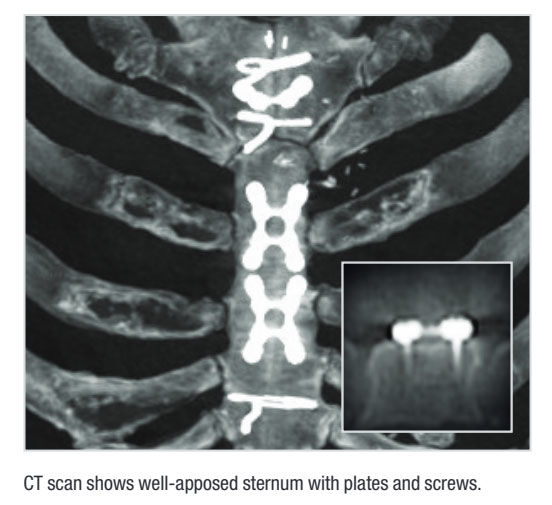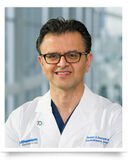Rigid Sternal Fixation: Top 6 Facts for Patients
Written By: Adam Pick, Patient Advocate, Author & Website Founder
Page last updated: November 7, 2023
As I personally experienced… Sternal wires are commonly used to support the breast bone as it heals after open heart surgery. As a community… We have openly discussed the discomfort and pain that can be associated with sternal wires during the healing process. In fact, several patients in our community have had their sternal wires removed.

Specific to this topic, I recently talked to Dr. Marc Gerdisch about Rigid Sternal Fixation which is an alternative to sternal wires. As always, Dr. Gerdisch had several great insights to share. For that reason, I asked Dr. Gerdisch a series of questions about incisions, sternal wires and Rigid Sternal Fixation to educate our community. (So you know, Dr. Gerdisch is the Chief of Cardiovascular and Thoracic Surgery at Franciscan St. Francis Heart Center in Indianapolis. He has successfully treated many patients from this website. You can see 88 patient testimonials for Dr. Gerdisch here.)
What are the different types of incisions used during heart valve surgery?
For most single valve operations and for many combined procedures, I have moved away from a standard sternotomy or cutting of the breast bone known as the sternum. Valve operations are performed most frequently without cutting the sternum or sometimes by cutting only part of it. Mitral valve repair and aortic valve operations are commonly done through small incisions between the ribs on the right side of the chest. However, surgeries involving multiple valves, some repeat operations and valve surgeries combined with other procedures such as coronary artery bypass or reconstruction of the aorta are often best approached through a standard sternotomy, providing access to every part of the heart and large blood vessels in the chest.
It is rare that ribs must be cut to perform heart valve surgery. When one is cut, the most common way to restore it is by using a narrow, thin multi-holed plate made of titanium. Bone screws are placed through the holes and the plate spans the cut or break, creating a rigid permanent brace that is immediately functional but also provides the optimum conditions for the bone to rapidly heal. By bringing the two ends together and eliminating movement, the plate ensures alignment and stable bone growth. When a person suffers chest trauma, for example from an automobile accident, fractured ribs are repaired in this fashion.
Interestingly, the midline sternotomy is the only osteotomy (cutting of bone) that has not been routinely repaired using plates and screws, a process known as rigid fixation. For nearly fifty years, bone repair has been performed with rigid fixation by every surgical specialty except heart surgeons. It began with orthopedics, followed by neuro-spine surgery and then cranio-facial operations. It makes sense that it began with orthopedics as the bone is the focus of the operation. Rigid fixation has spread to other disciplines as experience and research proved it to be the most effective means of restoring function and speeding bone healing.
How do surgeons stabilize the bone after heart surgery?
The most common way sternums are closed in cardiac surgery is called cerclage. Cerclage is any method used to bring the cut edges of bone back together by wrapping a wire or band around or through the two portions of bone and then tightening the wire or band to pull the two parts of the bone together. This achieves approximation (bringing edges in proximity to one another) and compression, which are only two of the necessary components of bone fixation. The wires are typically stainless steel, but can be made of other metals or synthetic materials and may be placed as a loop or a figure of eight. Sometimes braces are added to the outer boarders of the sternum, to prevent the wires from cutting through the bone.

All cerclage methods achieve the first two elements of bone fixation, approximation and compression. However, they do not eliminate side-by-side movement of the two pieces of bone that are intended to heal together. Nor does cerclage alone do well to prevent separation of the two pieces of bone from each other when stress is applied, which leads to a lack of approximation and compression.
Are there any new techniques or devices used to enhance the bone healing process?
Rigid sternal fixation providing immobile approximation and compression requires that the bone be brought together with cerclage followed by multi-point fixed attachment with a device that distributes stress and does not allow any movement. As with rib fixation described above, rigid sternal fixation is achieved by implanting very thin titanium plates laying on the surface of the sternum with multiple holes for specialized bone screws to pass through into the bone, preventing movement in any direction, regardless of the direction of stress.
What are the patient benefits of Rigid Sternal Fixation? Have any clinical studies evaluated these benefits?
The importance of having all elements of bone stabilization including rigid fixation is made clear from decades of research and clinical studies evaluating bone healing. Specific to the sternum, in 2016, we published a randomized control study comparing rigid sternal fixation to standard wire cerclage techniques in cardiac surgery patients. It involved many prominent cardiac surgery centers across the country and was led but Dr. Keith Allen. The study revealed a significant reduction of sternal wound complications for patients who received rigid sternal fixation. Continued follow up and analysis found more rapid return to mobility, less need for extended care after discharge from the hospital and less pain. Because of those positive impacts, performing rigid sternal fixation added no expense to the overall cost of caring for the group of patients who received plating as compared to those who received only cerclage.

The findings of the study along with the powerful response from our patients and the staff caring for them made it clear that all patients undergoing sternotomy, should have the advantage of rigid fixation. For the past two years, all but a very few sternotomy patients in our program have been treated with rigid sternal fixation. With the help of our dedicated physical therapy staff, we have designed a rapid mobilization protocol and changed the post-operative pathway dramatically. Because the bone does not move, patients are substantially more comfortable. This has fit very well with our advanced pain management protocol that nearly eliminates the need for opiate medications. It has been an amazing transition. Physical Therapy has designed a rapid assessment and mobilization program permitting patients to use their arms immediately after surgery and thereby allowing them early restoration of the freedom to get out of bed, up from a chair or off the commode unassisted. As you can imagine, patients are now much more likely to be discharged home instead of an extended care facility. It affects their entire recovery experience, quickly restoring the ability to carry out usual daily activities. If they do go to an extended care, the stay is likely to be abbreviated. Finally, patients return to full unlimited activity more quickly.
Do many patients get Rigid Sternal Fixation?
The method for managing the sternum following cardiac surgery has lagged all the other remarkable innovations benefiting patients, such as advanced valve repair techniques, newer generation heart valves and treatment for atrial fibrillation. The evolution of these has been standard of care. Meanwhile, patients have continued to be limited by the sternotomy short-term and unfortunately, sometimes long-term. Chronic pain of some degree is experienced by about twenty percent of patients. Occasionally, patients suffer with instability of the sternum or much worse, infection that can lead to sometimes extensive surgeries and prolonged recovery. While it is true that most high performing programs have low incidence of these major problems, they do still exist and for those patients it is very troubling. Some patients have particularly high risk for sternal complications.
How are your patients with Rigid Sternal Fixation doing after surgery?
Although there is no way to eradicate sternal healing problems for every patient, rigid sternal fixation dramatically reduces sternal healing problems in every category, while lessening discomfort and improving mobility. Knowing that every other bone repair is performed with rigid fixation, there is little if any argument to be made for less effective methods when putting together the load bearing and heart protecting sternum.
I hope this helped you learn more about incisions, sternal wires and Rigid Sternal Fixation. On behalf of our community, I wanted to extend a mighty “Thank You!” to Dr. Gerdisch for sharing his clinical experiences and research with our community!
Keep on tickin!
Adam
|
Henni Buice says on March 11th, 2018 at 12:54 pm |
|
My aortic dissection require an incision from my pelvic area up to my navel , around my back and up past the shoulder blade. I had many ribs removed due to this. Is there any help with a brace of some sort since I don’t have any core strength on my left side..I am so immobile…Thank you |
 |
|
Joachim Hjorth Hansen says on March 21st, 2018 at 3:49 am |
|
External support devices could be of help in your case. Look up devices such as the QualiBreath sternum and thorax support to help with supporting the ribs and QualiBelly Advanced for abdominal and back support. |
 |












